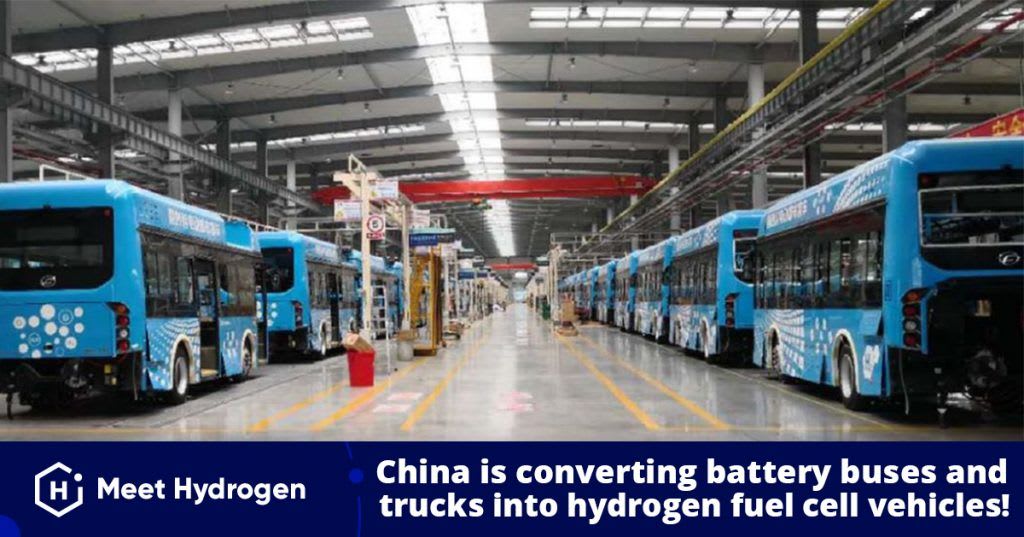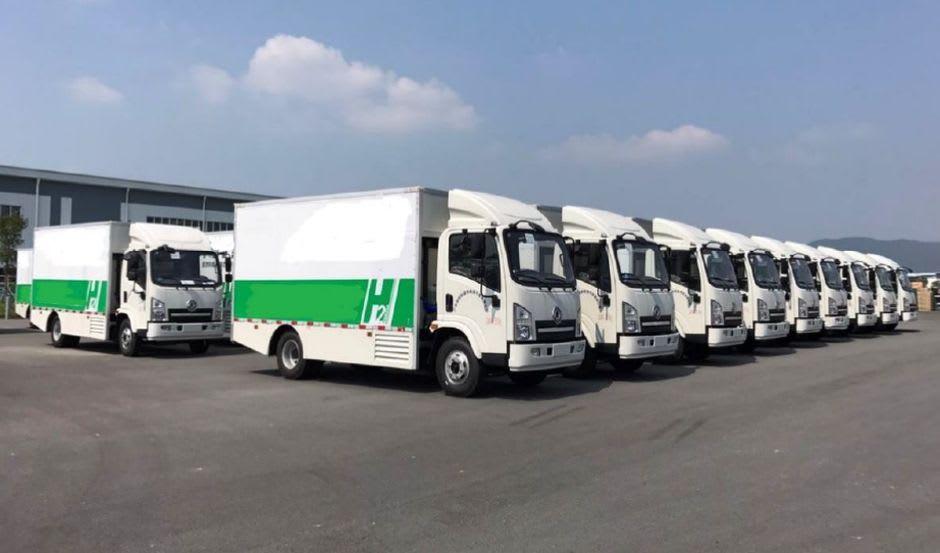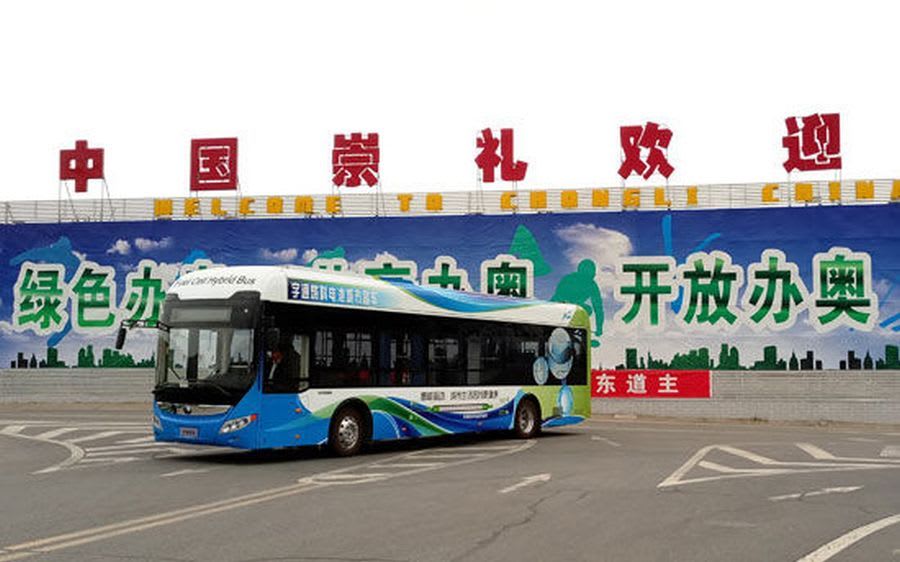China is converting battery buses and trucks into hydrogen fuel cell vehicles!
Written by Chris Kwacz
Battery electric vehicles such as municipal buses and trucks are being converted into hydrogen fuel cell vehicles by China. The northern parts of China are very cold and the battery electric busses do not work well in the cold weather conditions. The authorieties are converting nearly the enire fleet in the main cities from batteries to hydrogen fuel cell. The north has a lot of solar and wind energy aswell, what makes the fuel cell trucks and cars even more appealing.

World Platinum Investment Council director of research Trevor Raymond says: “China already has a very well-established infrastructure to charge batteries and run battery electric trucks. But in the north, it’s very cold and we know battery electric vehicles don’t work well in the cold at all. The north also has a lot of solar and wind energy and if they use that solar and wind, it makes the fuel cell trucks and cars very appealing,”
“So, what they’re doing now is converting nearly that entire fleet in their main cities from battery electric vehicles to fuel cell vehicles . . . to give their fuel cell industry critical mass in order to roll out new fuel cell trucks into northern China.”

The stand-out connection is the hydrogen economy, which pretty much bridges the gaps. What we’ve seen with Covid is that many governments are stretched for funding and what they’re doing is making long-term sustainable policy changes and this has heightened the importance of hydrogen as a fuel. To make a haulage truck that is battery driven is very hard so a fuel cell truck has a huge advantage. There’s lots of examples. In Switzerland, they’re using fuel cell trucks to move groceries around, and have a zero-emissions vehicle, and that’s working quite well. To build up a fuelling infrastructure you need about 700 cars to make a hydrogen station economically viable but you only need about 27 trucks, which means that if you’ve got a small truck fleet, you can afford to put the hydrogen refuelling in place.
That’s good for governments that don’t want to spend money on infrastructure, particularly the battery infrastructure. But the small 3 t to 6 t trucks in Chinese cities are battery electric, and they are quite efficient. Those are all depot-based and they go to the depot overnight to maybe charge and in those large Chinese cities, planning was quite easy. They could put infrastructure in place when they were building. They were expanding, they had a lot of money. To go and retrofit a European city with that same kind of infrastructure is much harder, which is perhaps why we have not seen battery expand as much in Europe. But certainly, China wants to expand the fuel cell strongly, particularly into the north, where it’s cold and has a lot of solar and wind power.

There has been significant global investment in the automotive sector to reduce greenhouse emissions. Battery electric cars are seen as a helpful way to reduce these emissions. The reality, however, in my view is that few designs, built and operated only in clean electricity markets make a contribution to reducing CO2,” said Raymond.
Currently, most battery electric vehicles are no cleaner than an efficient modern diesel. Fuel cell electric vehicles are a very clean transport alternative, that will contribute to reducing global warming, when fuelled with green hydrogen. This technology depends upon the use of platinum. Fortunately, fuel cell electric vehicles are 80% similar to battery electric vehicles in construction. Hence, future fuel cell electric vehicle platform costs will benefit from the accumulated volume economies provided by battery electric vehicles,” Raymond added.
Source: MININGWEEKLY
#meethydrogen
Chris